Effect of High-Speed Train-Induced Wind on Trackside UAV Thrust Near Railway Bridge
Abstract
:1. Introduction
2. Experimental Setup
3. Analysis of the Effect of High-Speed Train-induced Wind on UAV Thrust along a Track
3.1. Characteristics of Train-induced Wind by a High-Speed Train along the Track
3.2. Analysis of the UAV Thrust Change Caused by Train-Induced Wind
4. Conclusions
Author Contributions
Funding
Conflicts of Interest
References
- Kim, S.I. Experimental evaluations of track structure effects on dynamic properties of railway bridges. J. Vib. Control 2010, 17, 1817–1826. [Google Scholar] [CrossRef]
- Kim, S.I.; Kim, N.S. Dynamic performances of a railway bridge under moving train load using experimental modal parameters. Int. J. Struct. Stab. Dyn. 2010, 10, 91–109. [Google Scholar] [CrossRef]
- Kim, J.; Chung, W.; Jay Kim, J.H. Experimental investigation on behavior of a spliced PSC girder with precast box segments. Eng. Struct. 2008, 30, 3295–3304. [Google Scholar] [CrossRef]
- Guo, T.; Chen, Z.; Liu, T.; Han, D. Time-dependent reliability of strengthened PSC box-girder bridge using phased and incremental static analyses. Eng. Struct. 2016, 117, 358–371. [Google Scholar] [CrossRef]
- Cho, H.W.; Yoon, H.J.; Yoon, J.C. Analysis of crack image recognition characteristics in concrete structures depending on the illumination and image acquisition distance through outdoor experiments. Sensors 2016, 16, 1646. [Google Scholar] [CrossRef] [PubMed] [Green Version]
- Lei, B.; Wang, N.; Xu, P.; Song, G. New crack detection method for bridge inspection using UAV incorporating image processing. J. Aerosp. Eng. 2018, 31, 04018058. [Google Scholar] [CrossRef]
- Cho, H.; Yoon, H.J.; Jung, J.Y. Effects of the ground resolution and thresholding on crack width measurements. Sensors 2018, 18, 2644. [Google Scholar] [CrossRef] [PubMed] [Green Version]
- Kim, H.; Lee, J.; Ahn, E.; Cho, S.; Shin, M.; Sim, S.H. Concrete crack identification using a UAV incorporating hybrid image processing. Sensors 2017, 17, 2052. [Google Scholar] [CrossRef] [PubMed] [Green Version]
- Liu, Y.F.; Nie, X.; Fan, J.S.; Liu, X.G. Image-based crack assessment of bridge piers using unmanned aerial vehicles and three-dimensional scene reconstruction. Comput. Aided Civ. Infrastruct. Eng. 2020, 35, 511–529. [Google Scholar] [CrossRef]
- Kang, D.; Cha, Y.J. Autonomous UAVs for structural health monitoring using deep learning and an ultrasonic beacon system with geo-tagging. Comput. Aided Civ. Infrastruct. Eng. 2018, 33, 885–902. [Google Scholar] [CrossRef]
- Munoz-Paniagua, J.; Garcia, J. Aerodynamic surrogate-based optimization of the nose shape of a high-speed train for crosswind and passing-by scenarios. J. Wind Eng. Ind. Aerodyn. 2019, 184, 139–152. [Google Scholar] [CrossRef]
- Yang, N.; Zheng, X.K.; Zhang, J.; Law, S.S.; Yang, Q.S. Experimental and numerical studies on aerodynamic loads on an overhead bridge due to passage of high-speed train. J. Wind Eng. Ind. Aerodyn. 2015, 140, 19–33. [Google Scholar] [CrossRef]
- Baker, C. The flow around high-speed trains. J. Wind Eng. Ind. Aerodyn. 2010, 98, 277–298. [Google Scholar] [CrossRef]
- Rocchi, D.; Tomasini, G.; Schito, P.; Somaschini, C. Wind effects induced by high speed train pass-by in open air. J. Wind Eng. Ind. Aerodyn. 2018, 173, 279–288. [Google Scholar] [CrossRef]
- Wang, S.; Burton, D.; Herbst, A.H.; Sheridan, J.; Thompson, M.C. The effect of the ground condition on high-speed train slipstream. J. Wind Eng. Ind. Aerodyn. 2018, 172, 230–243. [Google Scholar] [CrossRef]
- Xia, C.; Wang, H.; Shan, X.; Yang, Z.; Li, Q. Effects of ground configurations on the slipstream and near wake of a high-speed train. J. Wind Eng. Ind. Aerodyn. 2017, 168, 177–189. [Google Scholar] [CrossRef]

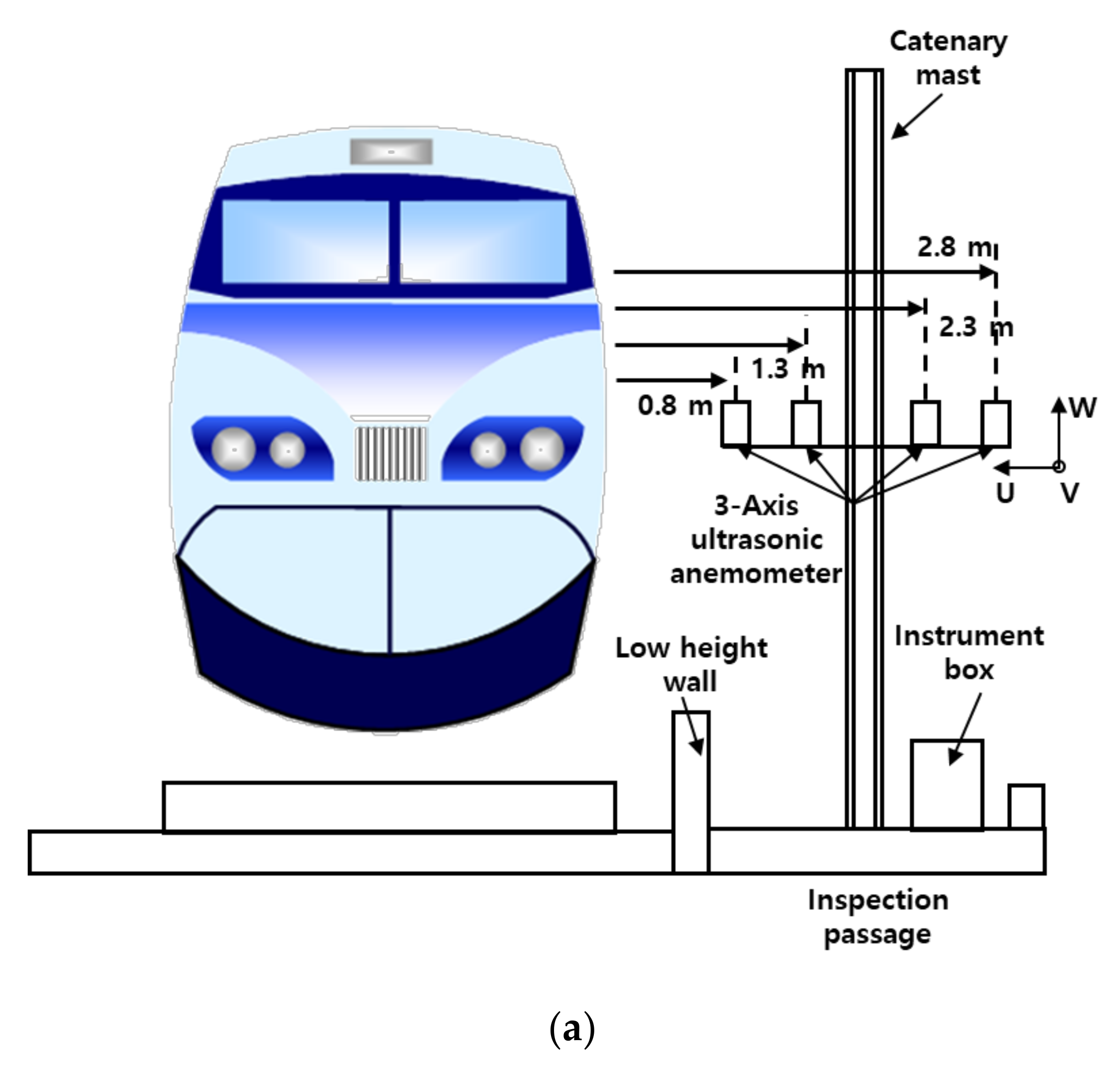
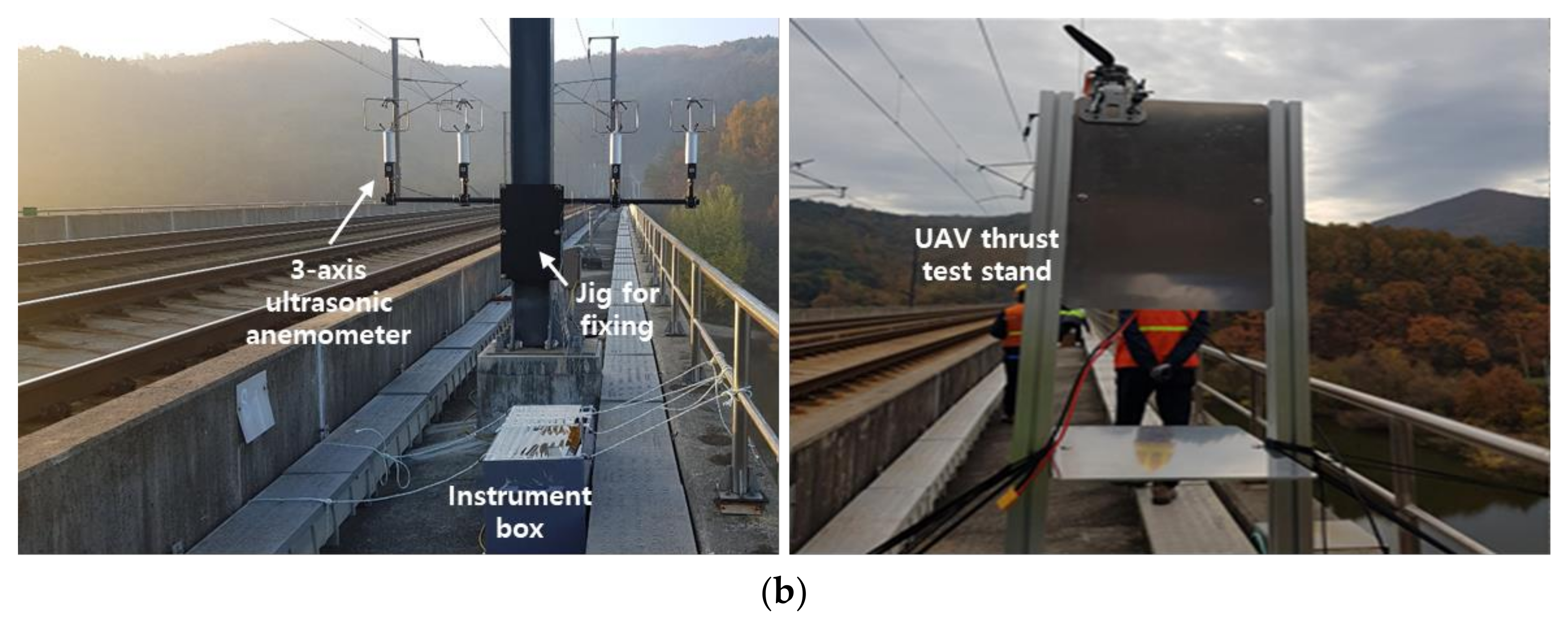
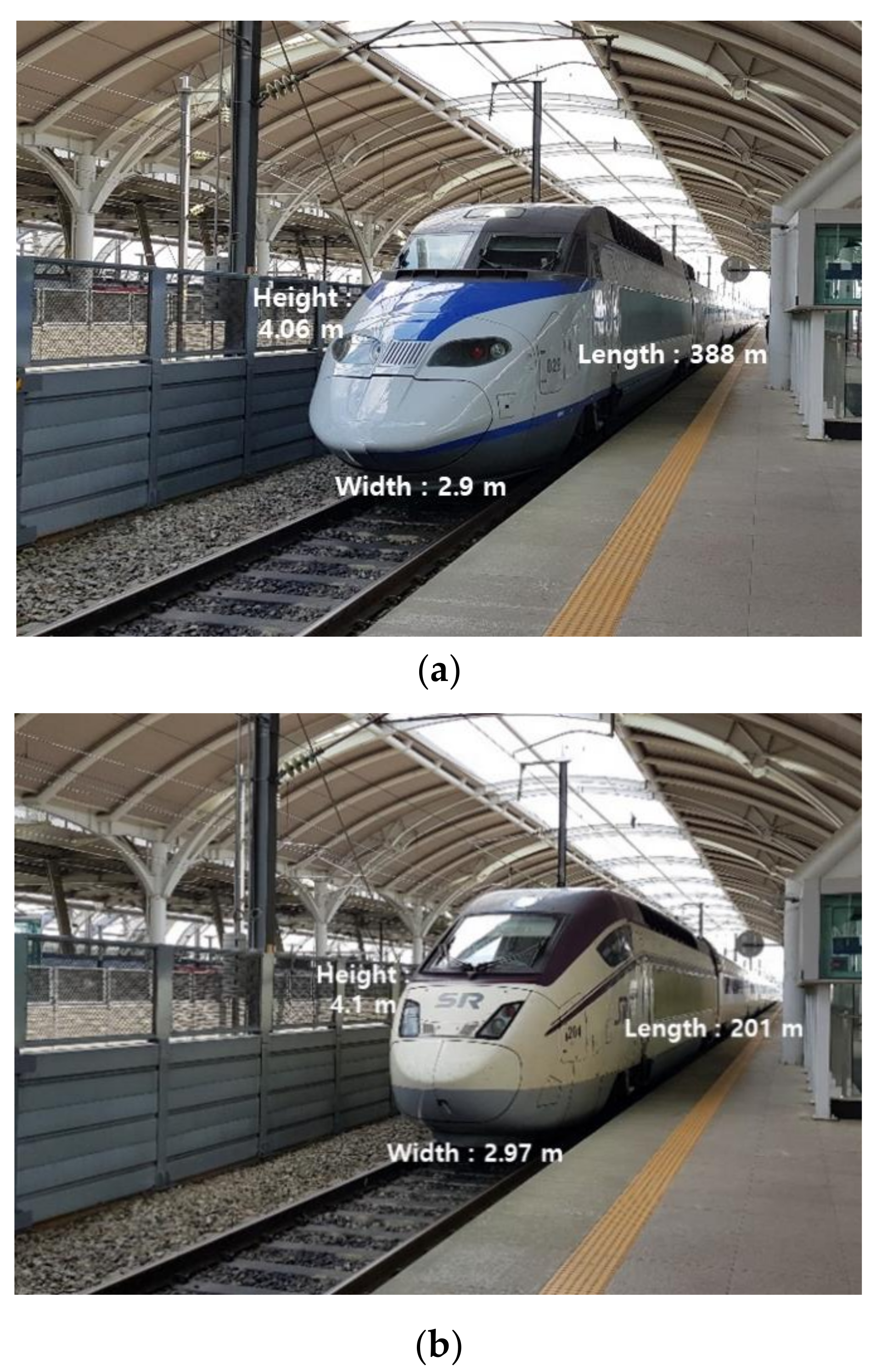
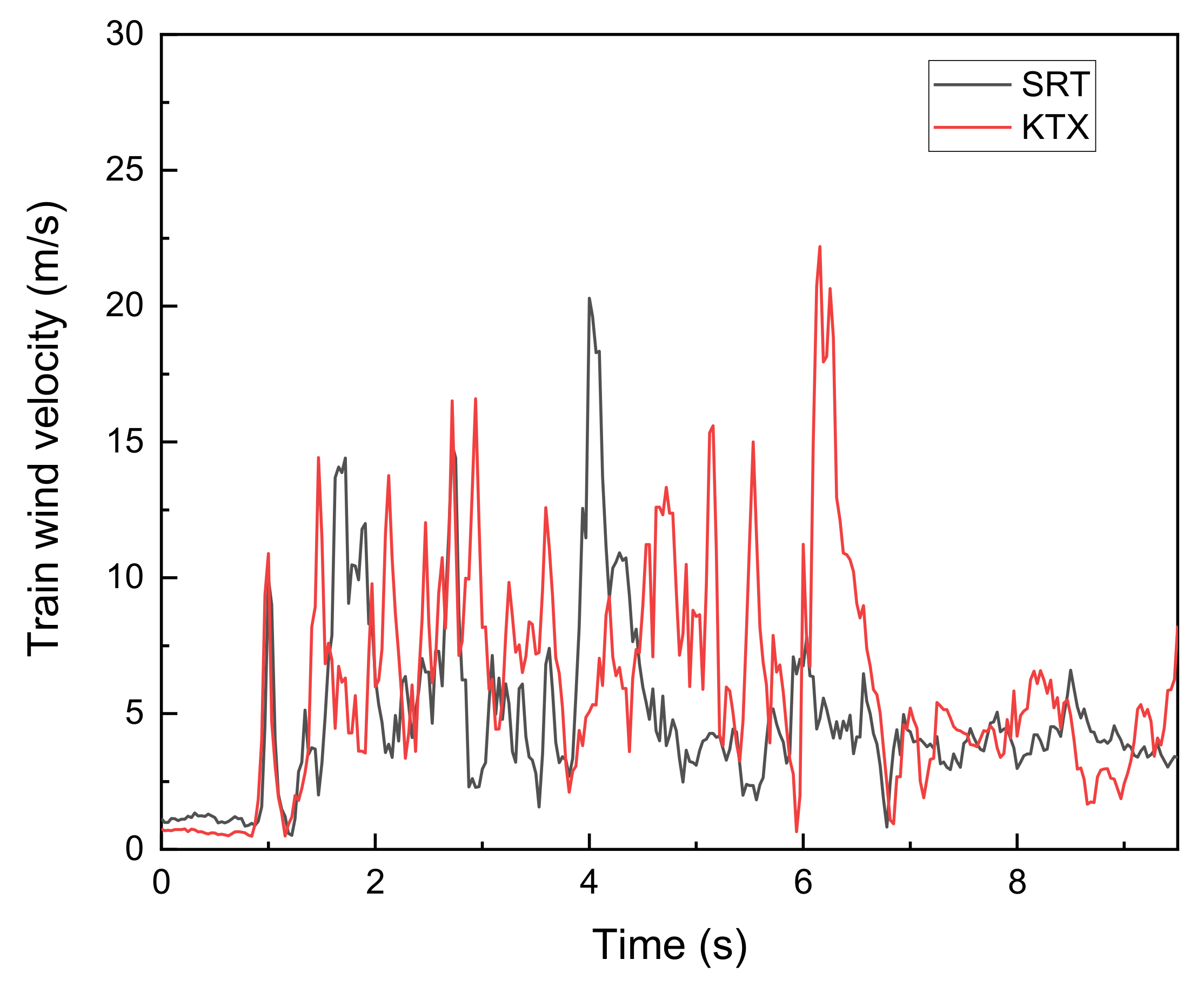


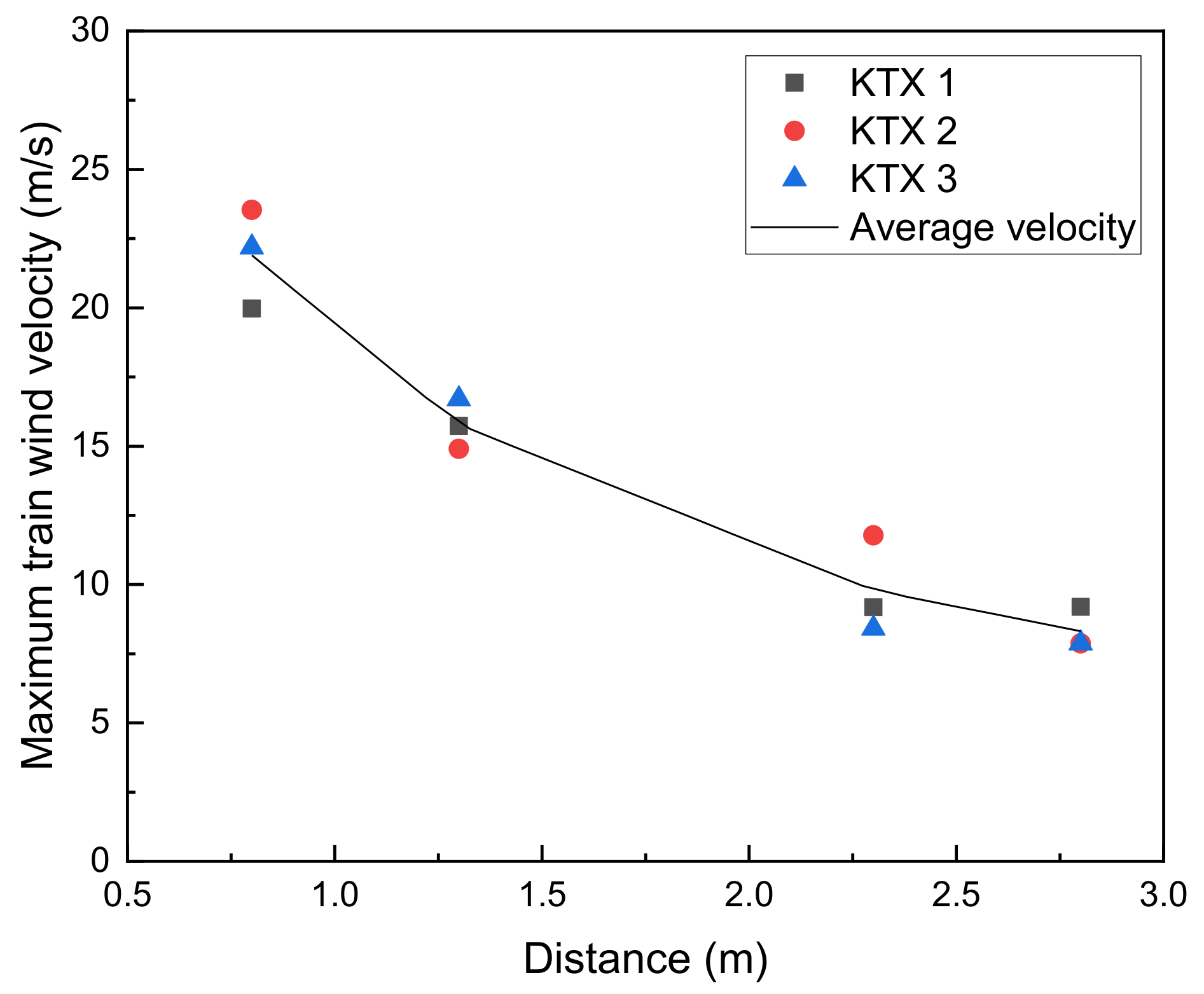
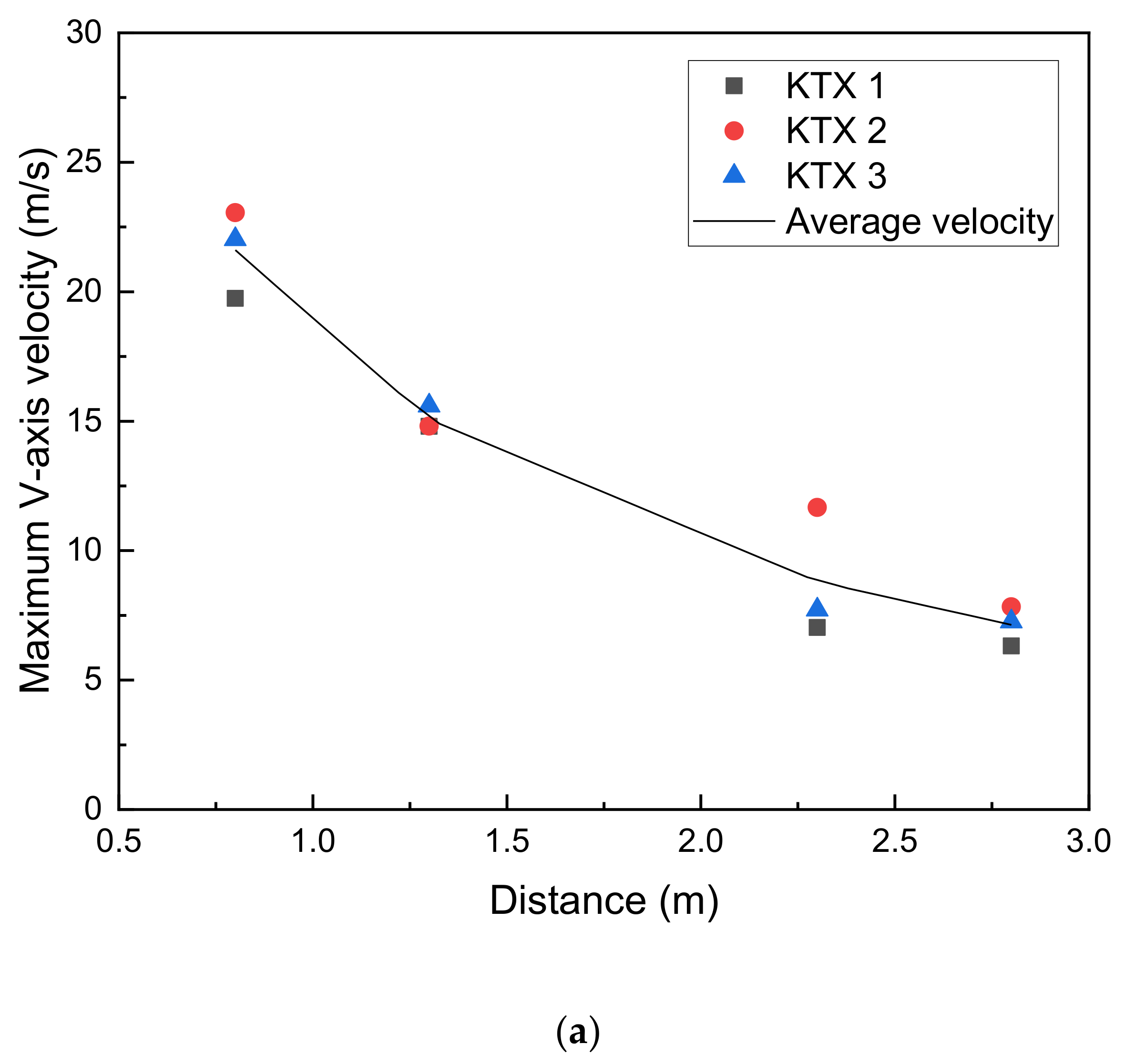
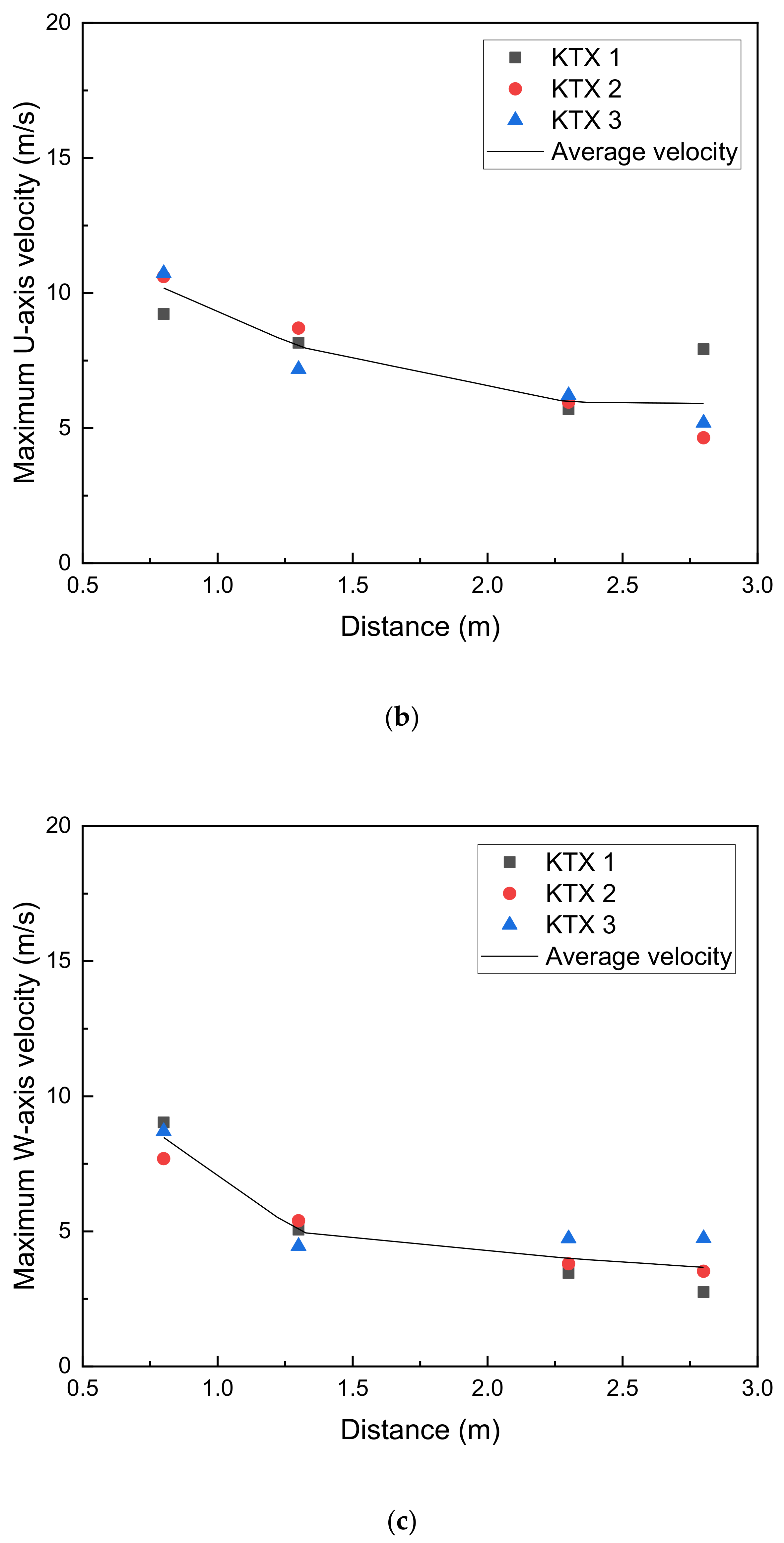
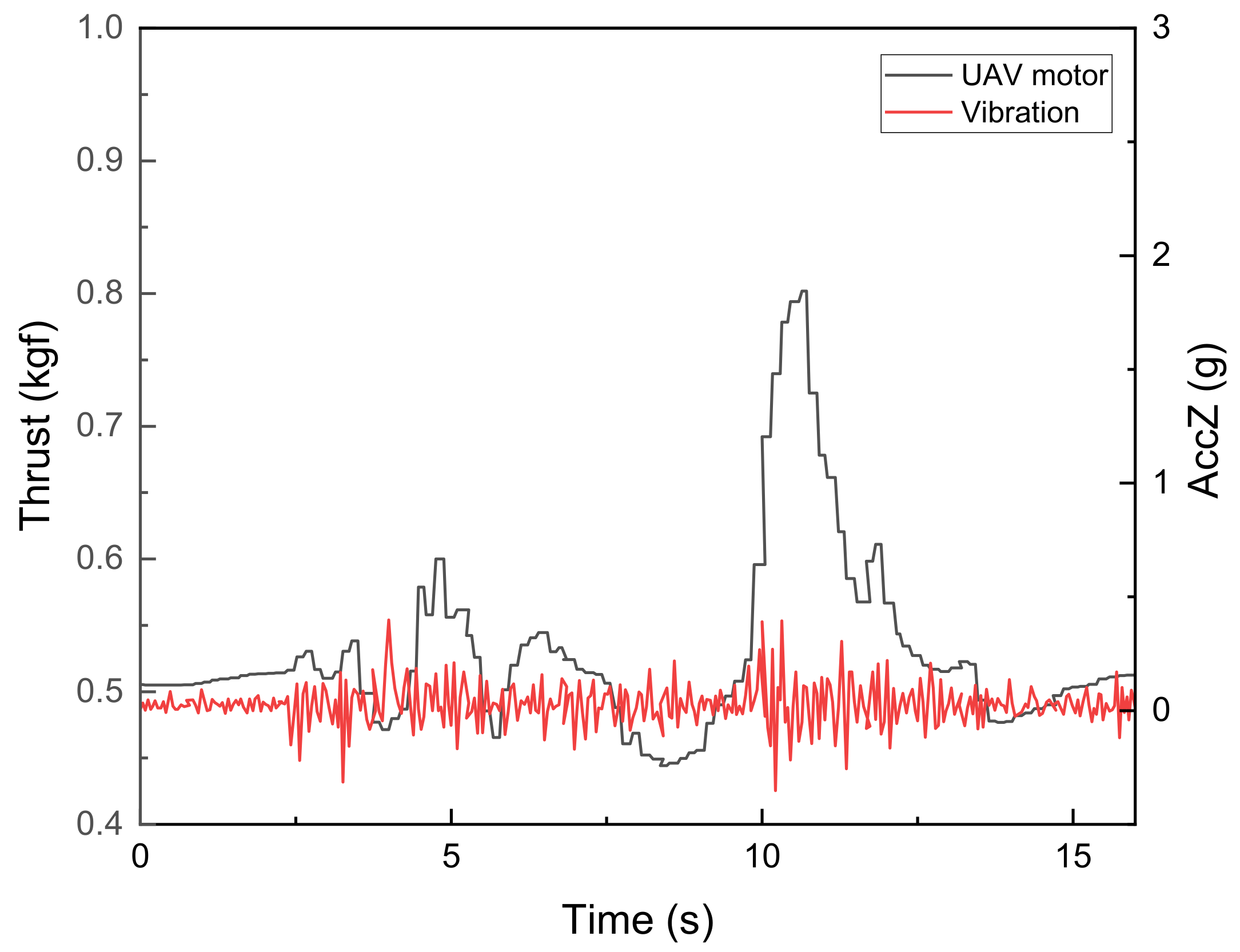
| System | Component | Parameter | Value |
|---|---|---|---|
| Train-induced wind measurement system | 3-axis ultrasonic anemometer | Wind velocity | 0–40 m/s |
| Resolution | 0.01 m/s | ||
| Accuracy | ±1% | ||
| Wind direction | 0–360° | ||
| Output speed | 32 Hz | ||
| UAV thrust test system | Motor | Size | Φ55.6 × 33.9 mm |
| Configuration | 24N28P | ||
| Max. Power | 1000 W | ||
| Propeller | Length/Pitch | 17 × 5.8 inch | |
| Weight | 32.5 g | ||
| Material | Carbon epoxy | ||
| Optimal RPM | 4000–6000 |
© 2020 by the authors. Licensee MDPI, Basel, Switzerland. This article is an open access article distributed under the terms and conditions of the Creative Commons Attribution (CC BY) license (http://creativecommons.org/licenses/by/4.0/).
Share and Cite
Yoon, H.-J.; Yun, S.-H.; Kim, D.-H.; Kim, J.H.; Cho, B.-K.; Lee, G.-G.; Park, S.-E.; Kim, Y.-C. Effect of High-Speed Train-Induced Wind on Trackside UAV Thrust Near Railway Bridge. Appl. Sci. 2020, 10, 3495. https://doi.org/10.3390/app10103495
Yoon H-J, Yun S-H, Kim D-H, Kim JH, Cho B-K, Lee G-G, Park S-E, Kim Y-C. Effect of High-Speed Train-Induced Wind on Trackside UAV Thrust Near Railway Bridge. Applied Sciences. 2020; 10(10):3495. https://doi.org/10.3390/app10103495
Chicago/Turabian StyleYoon, Hyuk-Jin, Su-Hwan Yun, Dae-Hyun Kim, Jae Hee Kim, Bong-Kwan Cho, Gi-Gun Lee, Soon-Eung Park, and Young-Chul Kim. 2020. "Effect of High-Speed Train-Induced Wind on Trackside UAV Thrust Near Railway Bridge" Applied Sciences 10, no. 10: 3495. https://doi.org/10.3390/app10103495
APA StyleYoon, H.-J., Yun, S.-H., Kim, D.-H., Kim, J. H., Cho, B.-K., Lee, G.-G., Park, S.-E., & Kim, Y.-C. (2020). Effect of High-Speed Train-Induced Wind on Trackside UAV Thrust Near Railway Bridge. Applied Sciences, 10(10), 3495. https://doi.org/10.3390/app10103495





